site search
online catalog
REGULATION FROCK COAT, CAP, AND GREEN MEDICAL SASH OF ASST. SURGEON ELIAS WILDMAN 40th NEW JERSEY
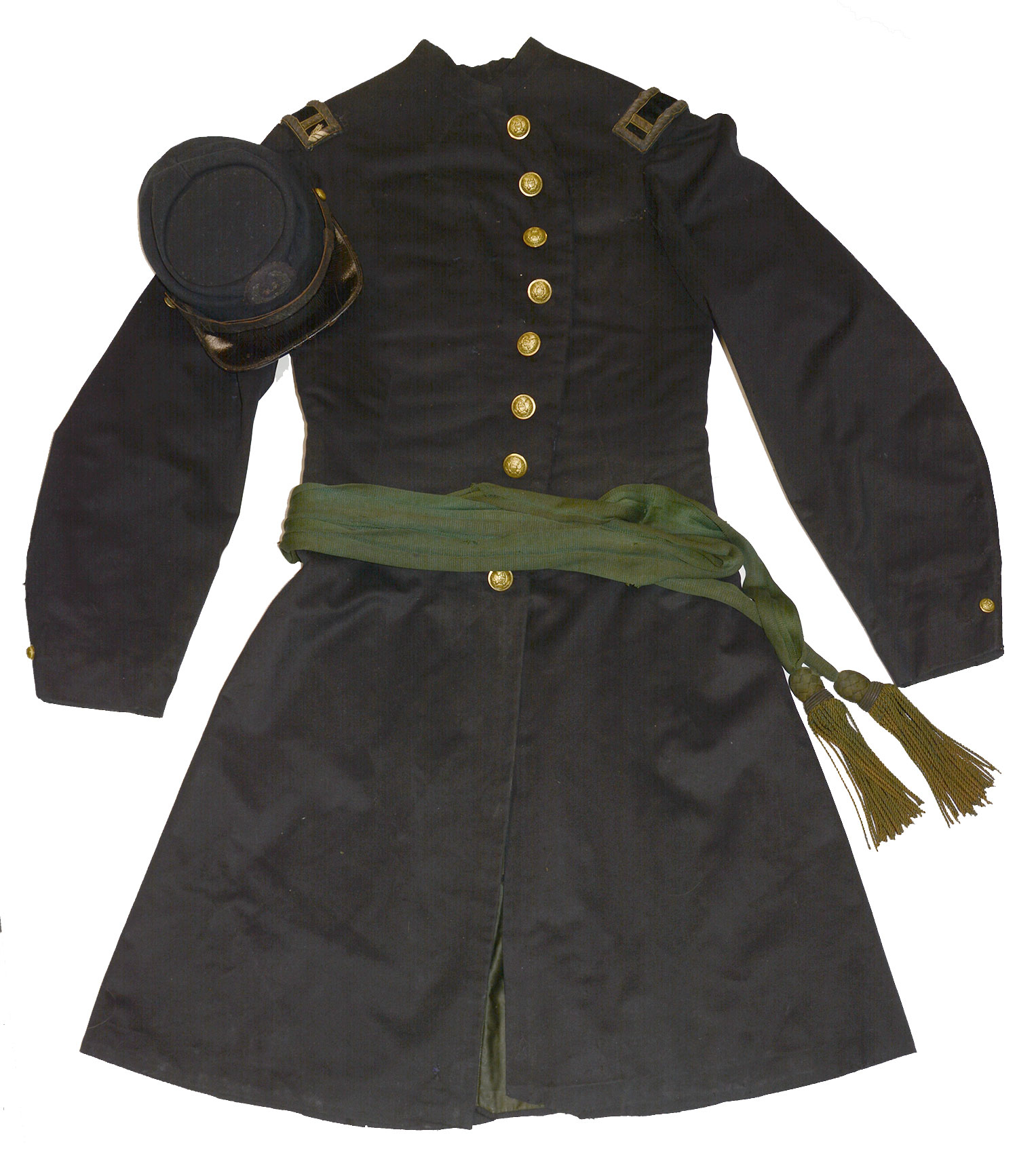
Hover to zoom

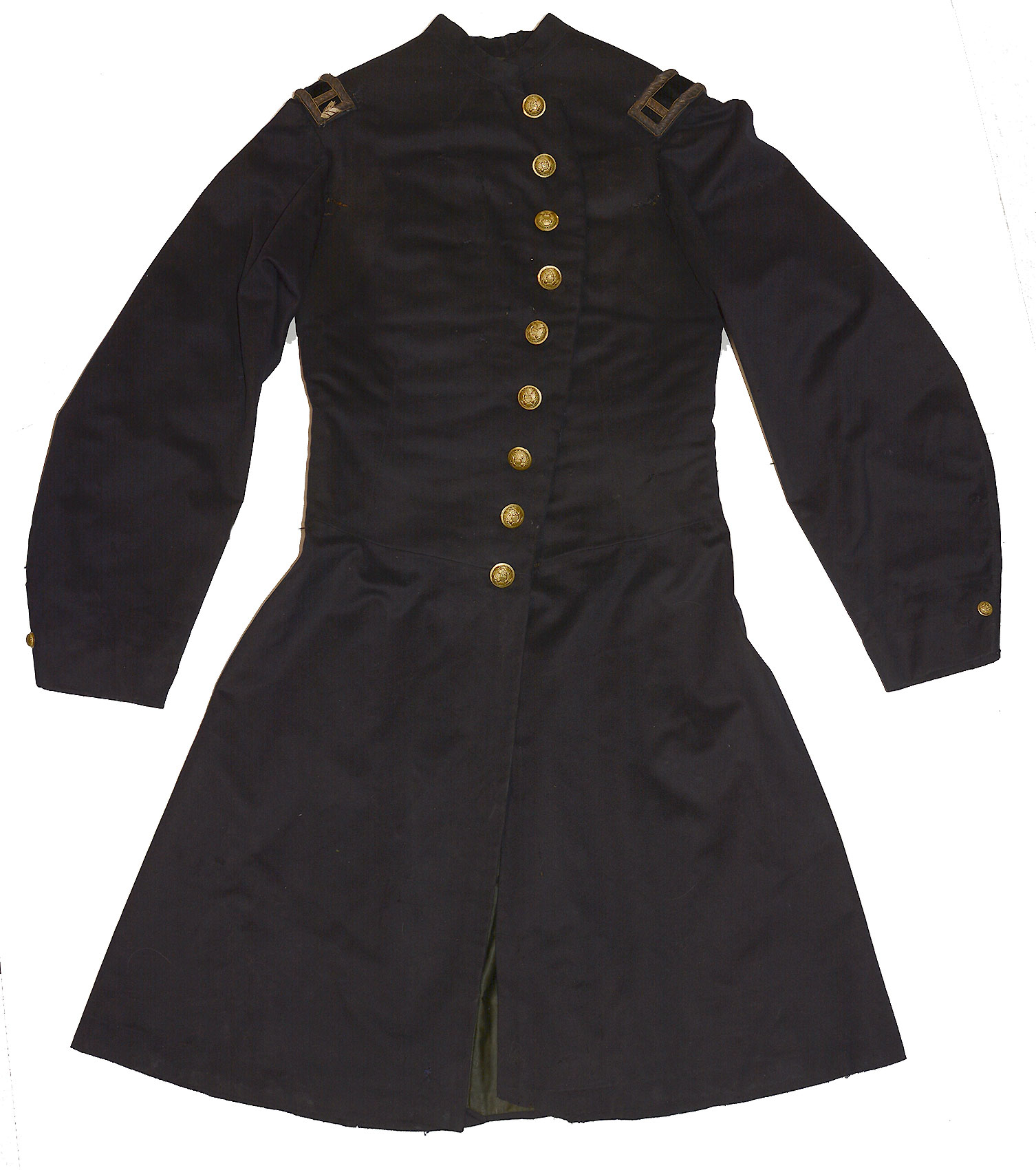



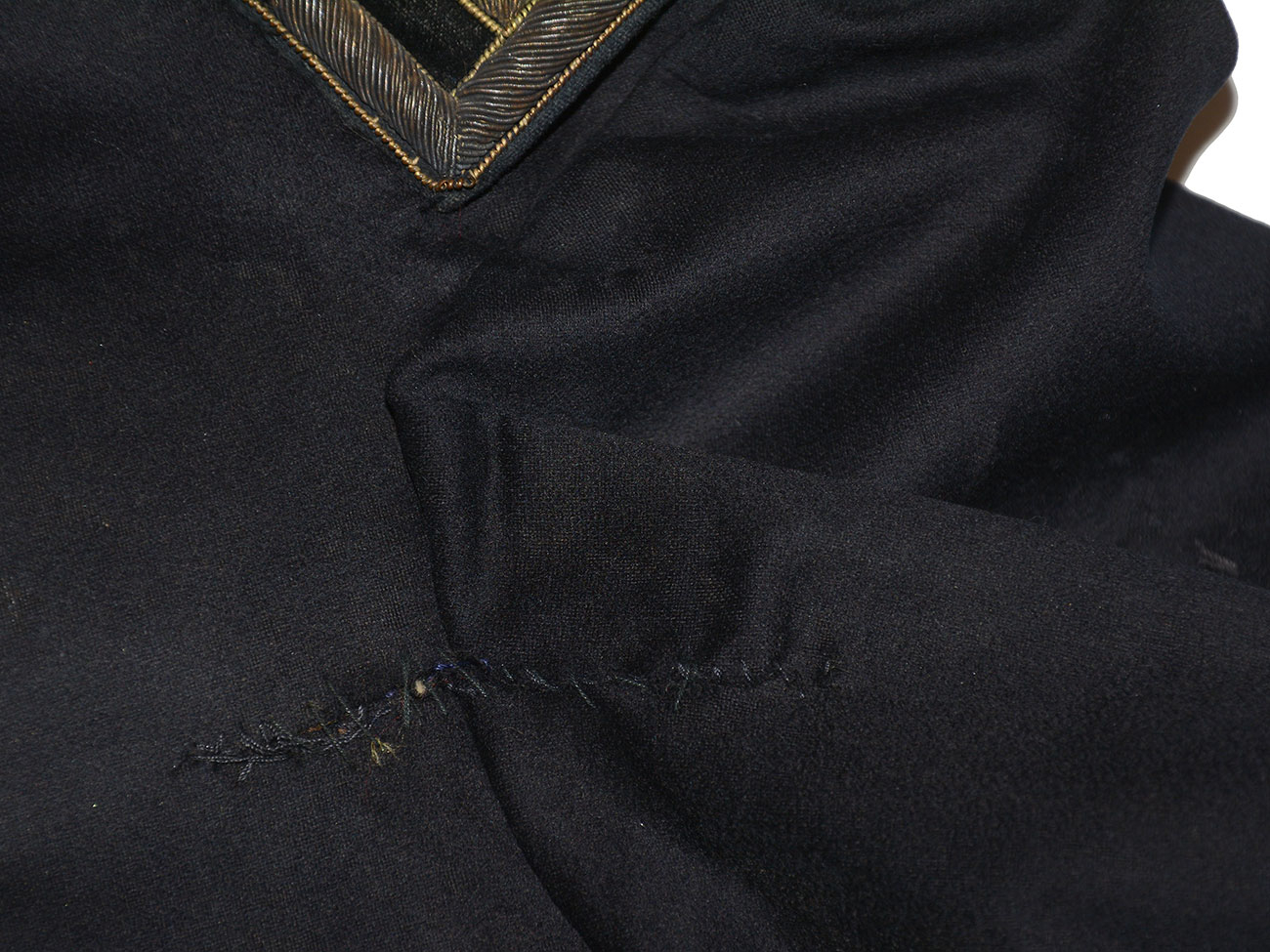



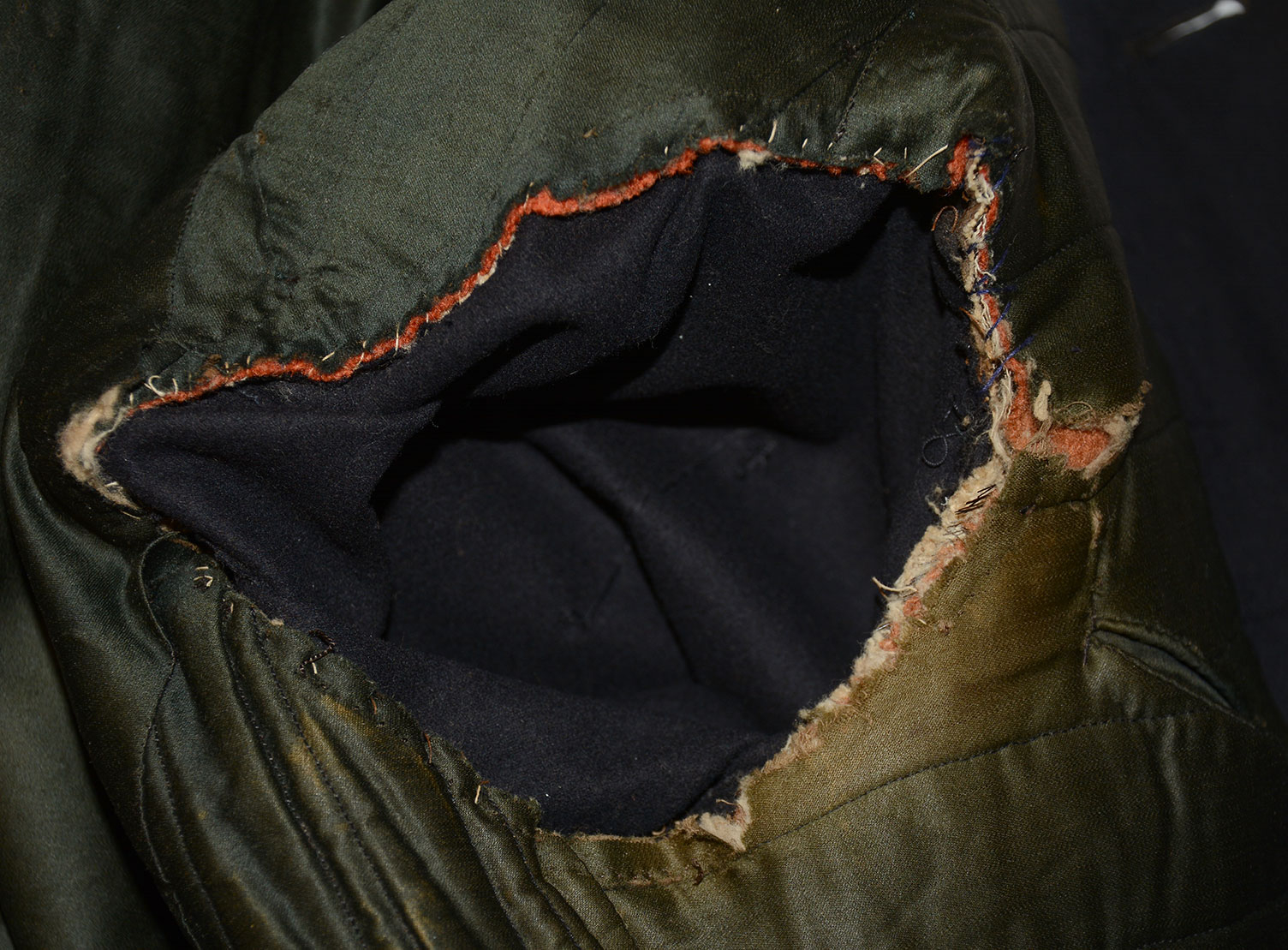

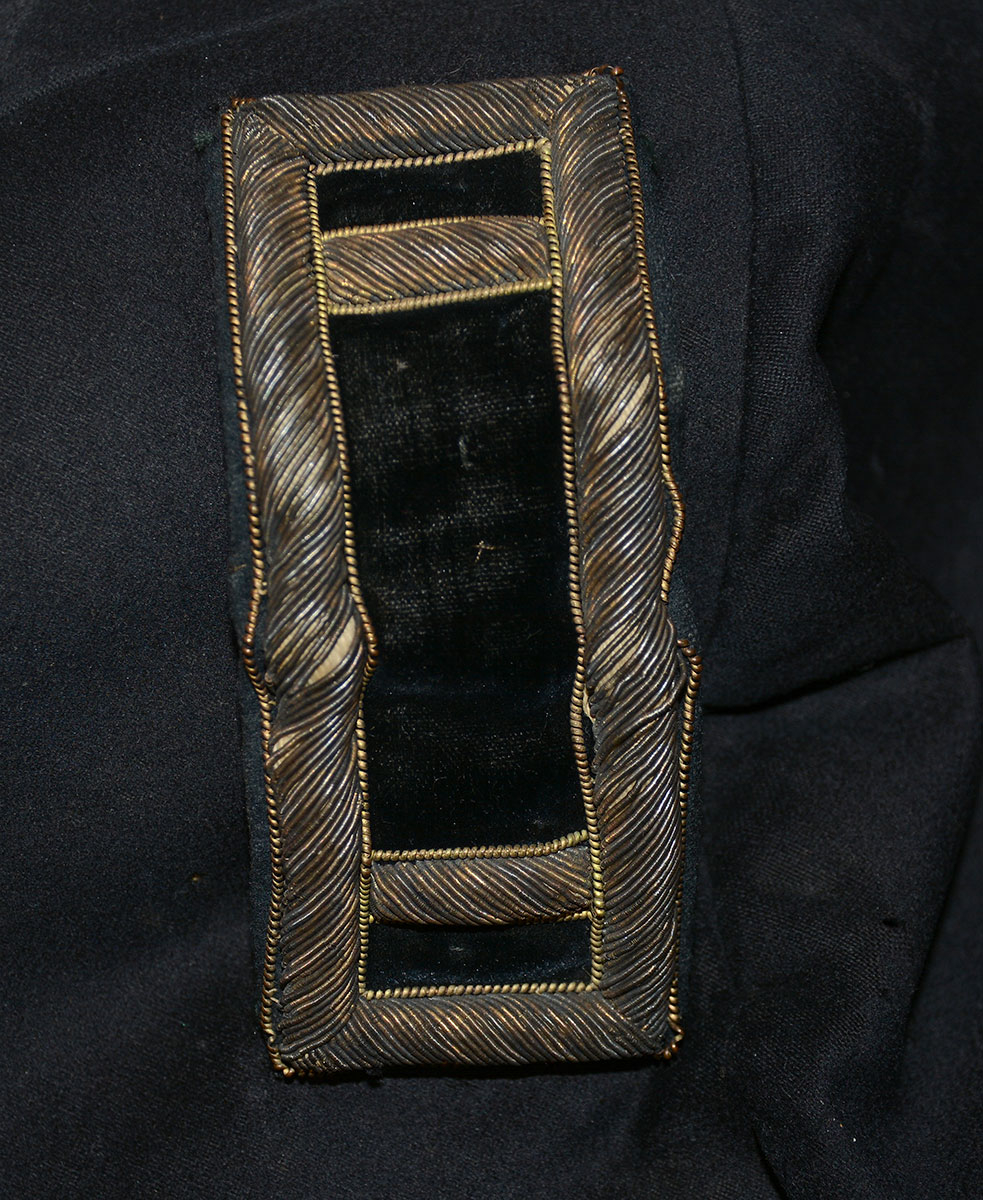
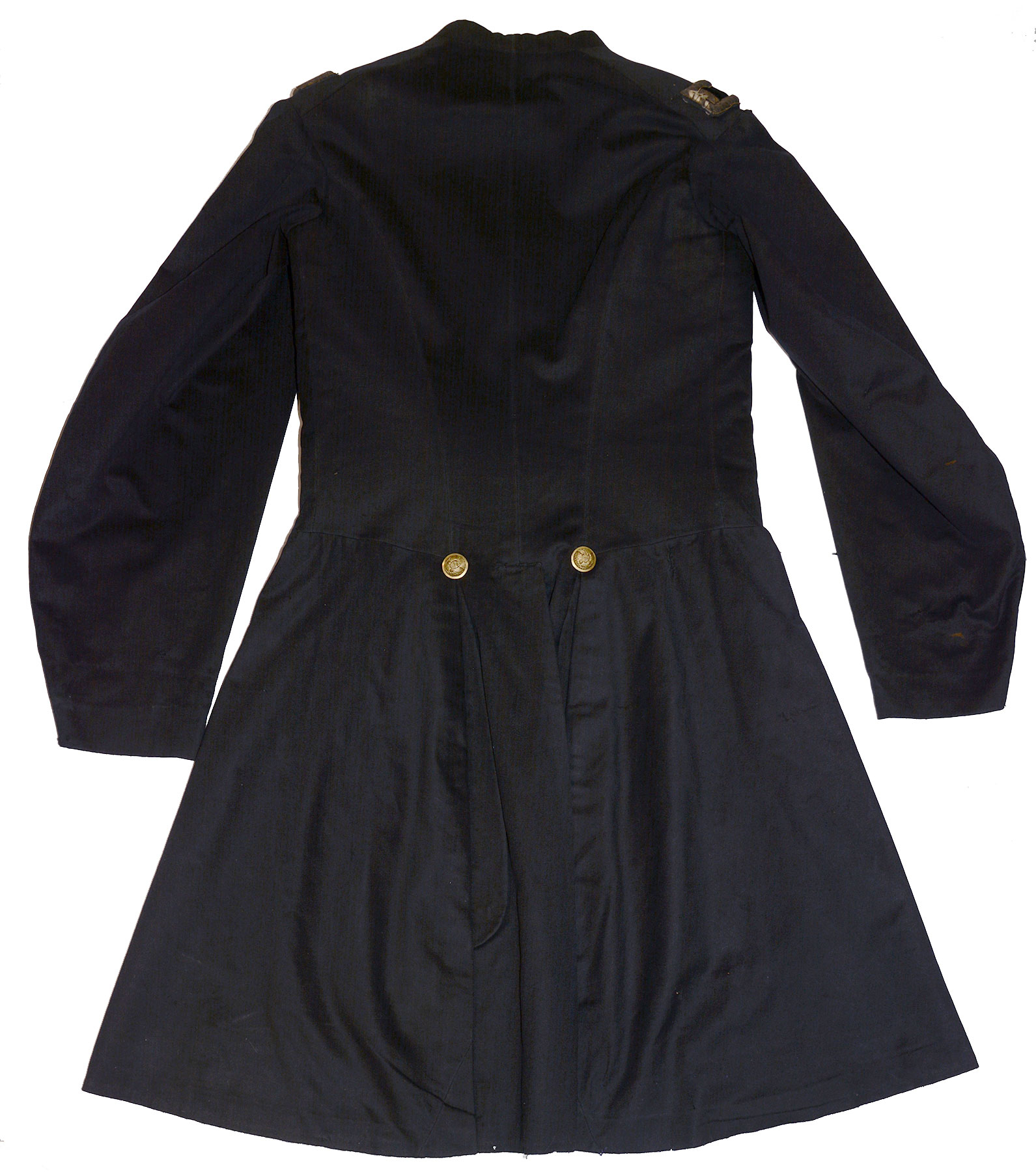
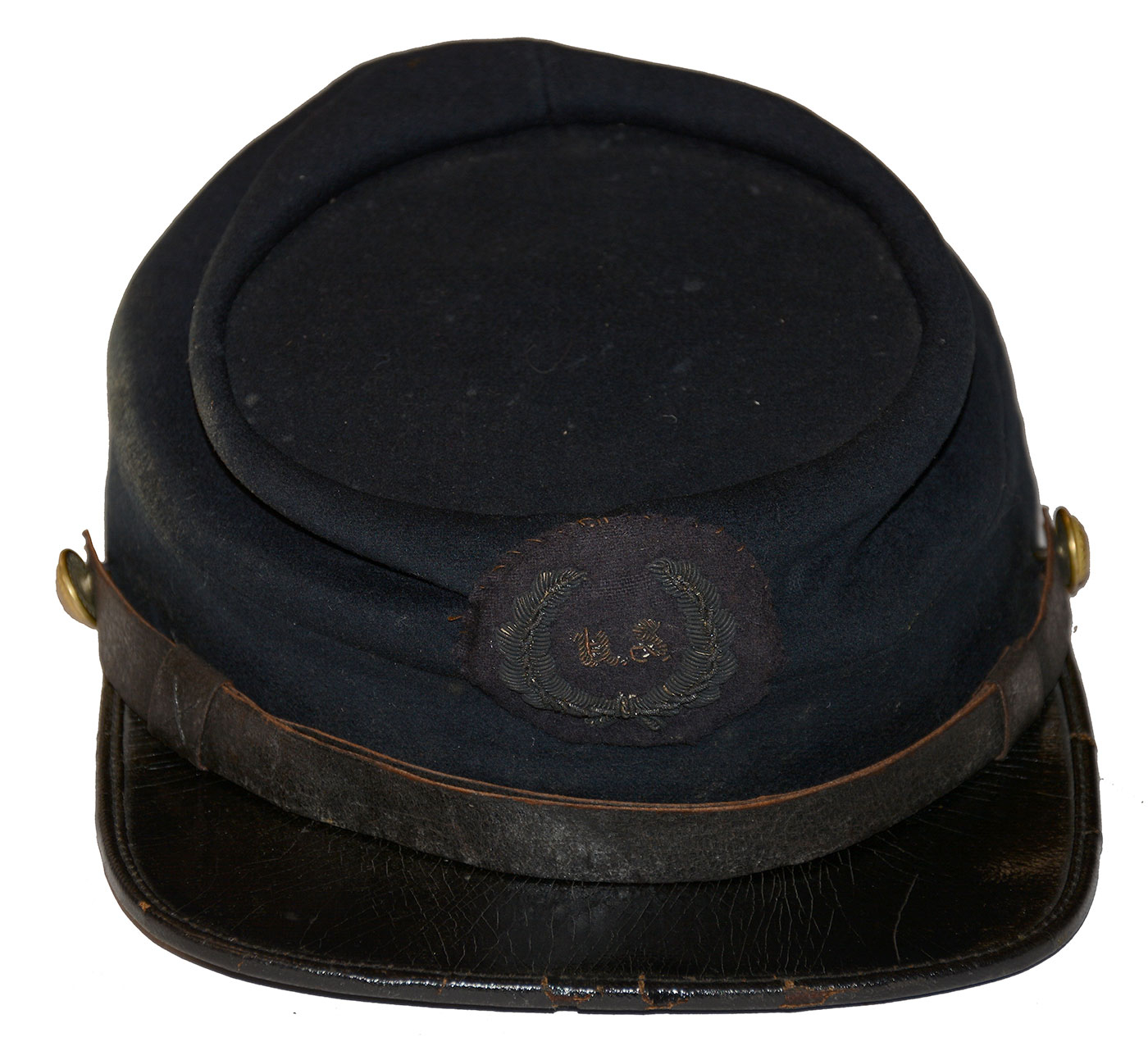
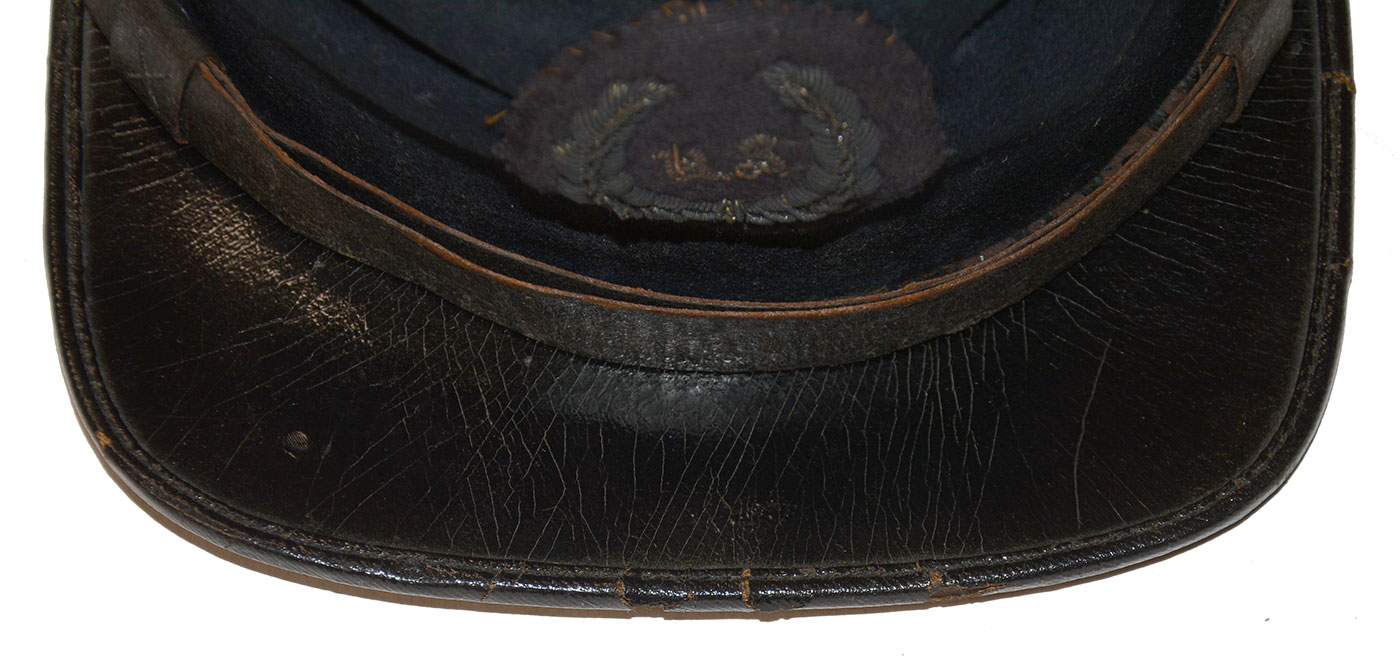




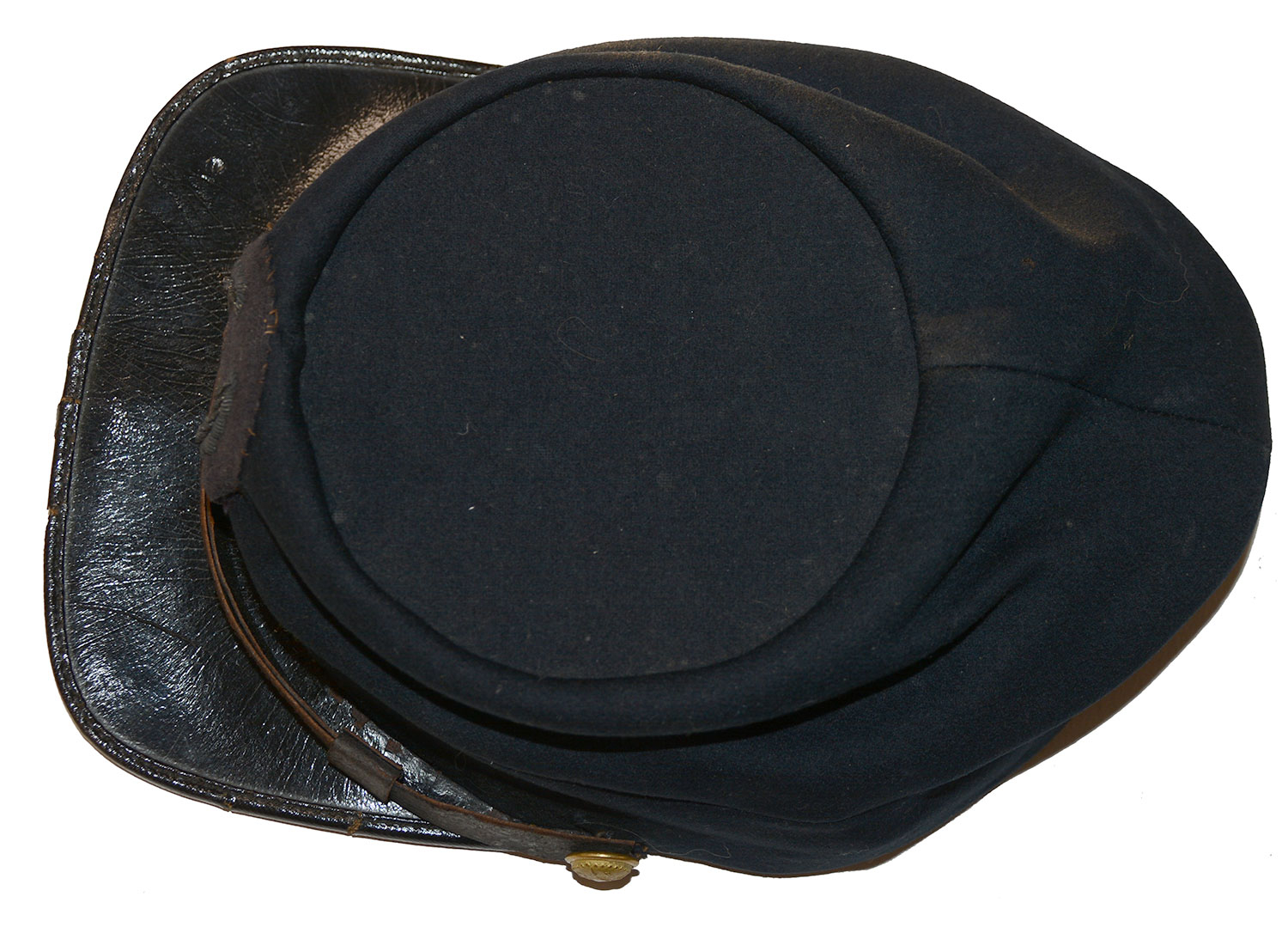

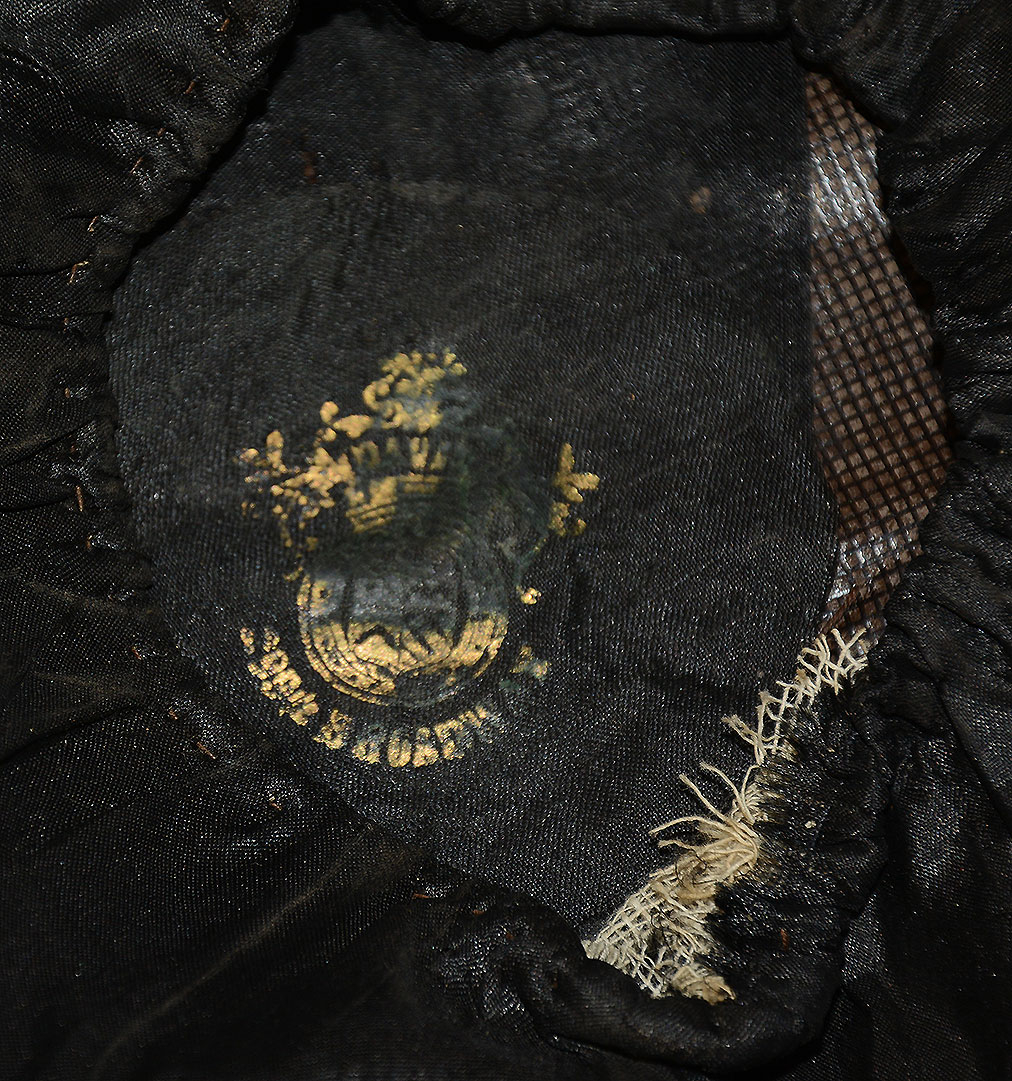

$12,500.00
Quantity Available: 1
Item Code: 1268-751
Shipping: Determined by Method & Location of buyer
To Order:
Call 717-334-0347,
Fax 717-334-5016, or E-mail
This identified Union Army Assistant Surgeon’s group came out of the family and was in a respected Las Vegas uniform collection for about 25 years until its acquisition by the Texas Civil War Museum. The officer, Asst. Surg. Elias Wildman, served in the 40th New Jersey in the Petersburg and Appomattox Campaigns and the group consists of his regulation officer’s frock coat, green medical officer’s sash, officer’s chasseur style kepi with insignia. This grouping shows well and could be the centerpiece of a Civil War medical display.
The coat is a regulation dark blue officer’s frock coat, single-breasted, fastening with nine general staff buttons. The standing collar is 1” tall and the sleeves have a fashionable 9” billow at the elbow. The cuffs are non-functional. Each cuff retains one small general staff button. The two large buttons at the rear waist are in place. Those customarily at the bottom of the tail pocket openings are gone. The tail pocket openings are false, with those pockets actually accessible from the inside. The coat is lined with the usual green and the chest and sides quilted. There is an interior breast pocket on either side. The body lining is very good.
The sleeve linings look to have been intentionally removed from the coat. Given that Wildman served in the Spring and Summer of 1865 in Virginia, this may have been decision made for personal comfort. At the armpit on each side we see a crudely mended tear about 1” long, with matching one on the inside of the left arm, likely from removing the sleeve linings. Only a 2” wide strip of lining remains in each cuff, likely a reinforcing piece originally under the main lining. The buttonholes show some wear from use. The coat shows a dozen small moth nips on the wearer’s right breast from about the second to fifth button. We see just a couple on the left, just above the waistline. Both First Lieutenant shoulder straps are in place, the correct rank for an assistant surgeon, made with raised embroidered bullion borders and rank bars on a velvet ground with jaceron wire along the edges. The velvet is very good, with deep blue color and no moth damage, the dark blue being a frequent variation from black for staff officers and the use of staff insignia for medical staff also being a common usage during the war. The bullion has largely oxidized to a silver gray but shows some faint gilt color and the jaceron wire retains its gold color. The front and rear edge of the strap on the right shoulder shows some unraveling to the bullion strands, exposing the underlying cording. The strap on the left shoulder is very good, though both show some bunching from folding.
The cap is a low-crown chasseur style kepi with flat, bound brim. The two-piece chinstrap and general staff side buttons are in place. The front stands about 2-1/2” tall and has a sewn oval patch with embroidered bullion wreath surrounding a “US” in Old English. The black sweatband is firmly in place inside as is the black silk 2/3 lining that is open at the top to show a gilt embossed maker’s mark on the underside of the top. The mark is a crest reading “DAVID” at the top, with a Broadway address at bottom, slightly rubbed from wear, but legible. The condition of the cap overall is excellent, with good color, no moth damage, and tight seams. The insignia on the front of the cap has darkened from oxidation but still shows some subtle silver and gold tones.
The green medical sash is full length and complete with turk’s head knots and tassel ends. The sash, doubled in thickness, is 3-1/2 inches wide and about 100 inches long overall, including the two 6-1/2” knot and tassel ends. The condition overall is good, with good green to the body of the sash and some slight fading to an olive on the tassels, but there are a half-dozen or so moth bites, the worst of which is a 1” hole in one layer of the sash and another about 1” wide and 4” long through both layers, about 24 inches from one end. When displayed, however, these would be concealed by folds and the sash is solid.
Born in Bucks County, PA, in 1844, Wildman graduated the University School of Medicine in Philadelphia in 1865 and received a commission from the Governor of New Jersey as an Assistant Surgeon in the 40th New Jersey to date March 2, 1865, and mustered into the regiment at Parke Station, Virginia, on March 16. The regiment had begun organizing in October 1864 with companies being sent to the front and attached to the 4th New Jersey until the sixth company reached the front in February when they then assumed a regimental organization, with the last company mustering in in March. They were part of the 1st Brigade, 1st Division, 6th Corps, and were credited with service at Petersburg and the Appomattox Campaign. They were present but not engaged at Dabney’s Mills/Hatcher’s Run in February but took part in the final assault at Petersburg on April 2, suffering 23 wounded, of whom two died of their wounds. They then took part in the pursuit of Lee, were at Appomattox, and were then posted at Danville to late May. They reached Washington via Richmond to take part in the Grand Review and were mustered out July 13, 1865.
Muster rolls show Wildman present for the Petersburg and Appomattox campaigns. At the end of May or beginning of June, however, he came down with Typhoid and was given a 20-day sick leave on July 3 and still there when the regiment was mustered out July 13, receiving an individual muster out dating July 17.
Wildman returned to Pennsylvania, opened a medical practice in Fallsington, Bucks County, in Autumn 1865, and married in April 1866. The couple had four children, three of whom survived infancy. Wildman’s health, however, was apparently broken by his service. He spent a brief period in Florida in 1876 trying to recover but returned home to Pennsylvania where he died in December 1877 of “pulmonary consumption,” linked by various doctors to his army service on his family’s behalf in pension applications.
This would make a great addition to a medical or New Jersey related Civil War display. [sr][ph:L]
~~~~~~~~~~~~~~~~~~~~~~~~~~~~~~~~~~~
THIS ITEM, AS WITH ALL OTHER ITEMS AVAILABLE ON OUR WEB SITE,
MAY BE PURCHASED THROUGH OUR LAYAWAY PROGRAM.
CLICK HERE FOR OUR POLICIES AND TERMS.
THANK YOU!
Inquire About REGULATION FROCK COAT, CAP, AND GREEN MEDICAL SASH OF ASST. SURGEON ELIAS WILDMAN 40th NEW JERSEY
Most Popular
Historical Firearms Stolen From The National Civil War Museum In Harrisburg, Pa »
Theft From Gravesite Of Gen. John Reynolds »
Selection Of Unframed Prints By Don Troiani »
Fine Condition Brass Infantry Bugle Insignia »
Large English Bowie Knife With Sheath 1870’S – 1880’S »
Imported (Clauberg) Us Model 1860 Light Cavalry Officer's Saber »
featured item
CIVIL WAR INFANTRY SERGEANT’S FOUR-BUTTON FATIGUE BLOUSE
This is a very good example of a very rare Civil War uniform: the 4-button blouse originally designated for “fatigue” wear in the regular army, but which quickly became the standard field uniform in the Union army, worn by enlisted men in all… (1268-268). Learn More »


